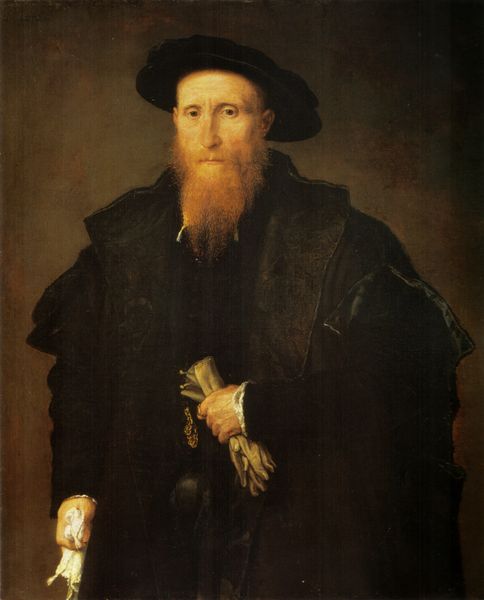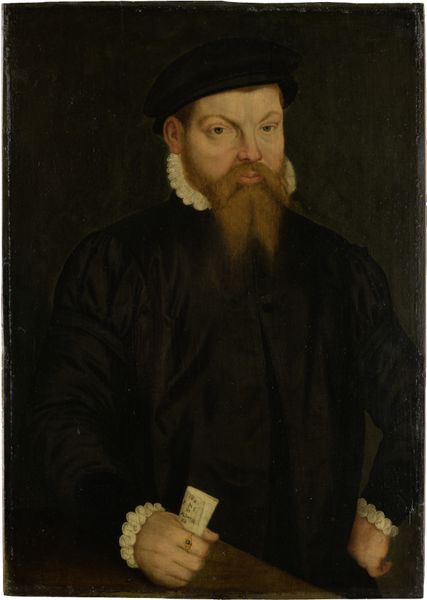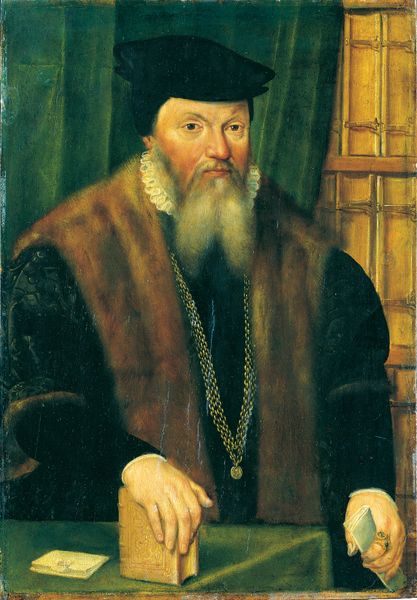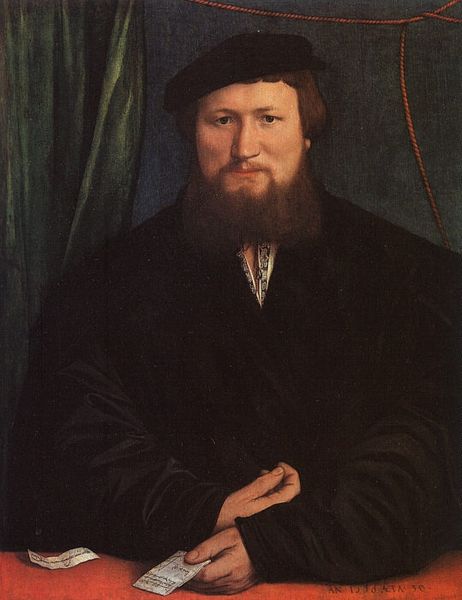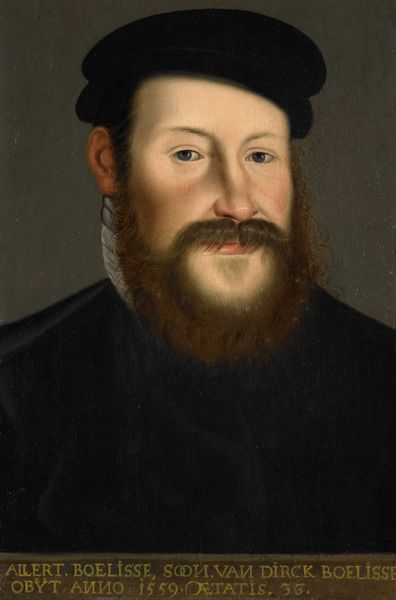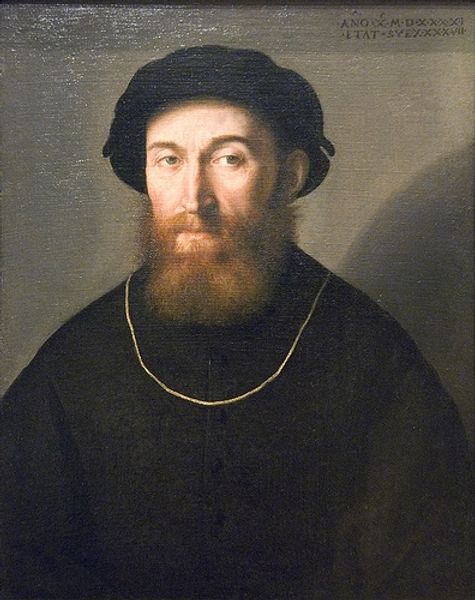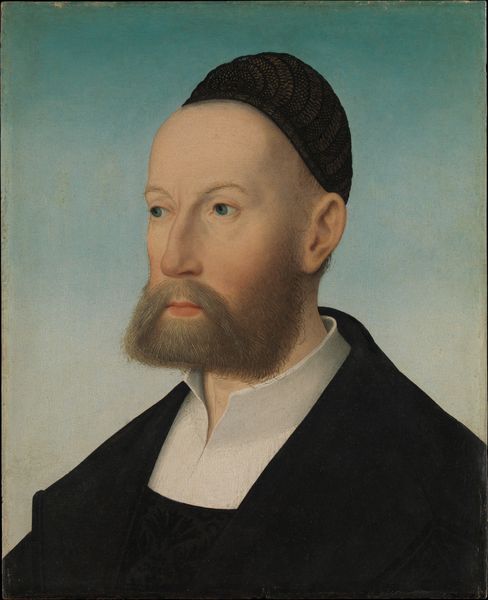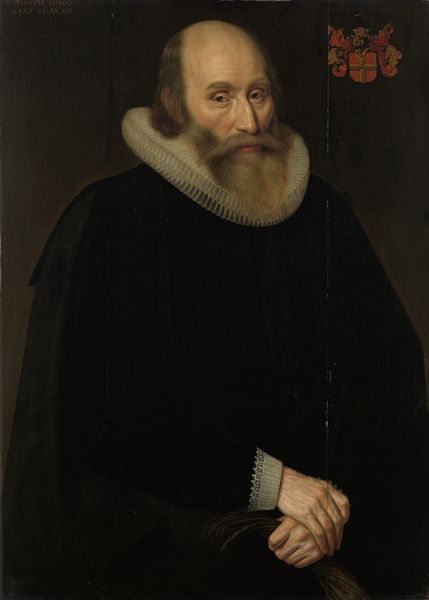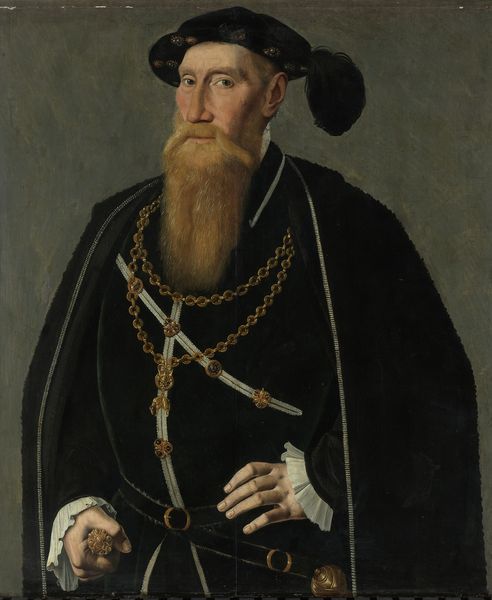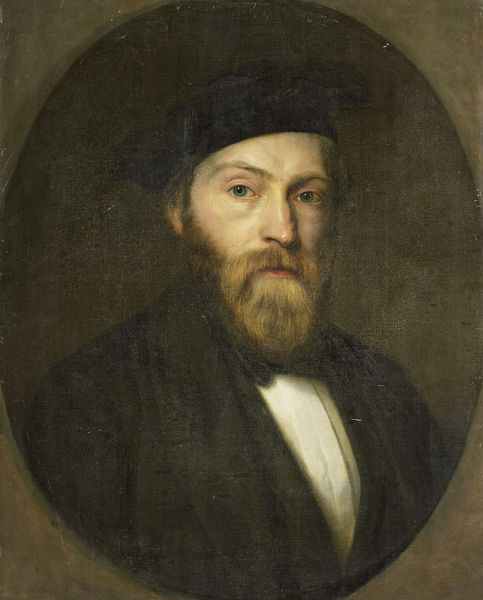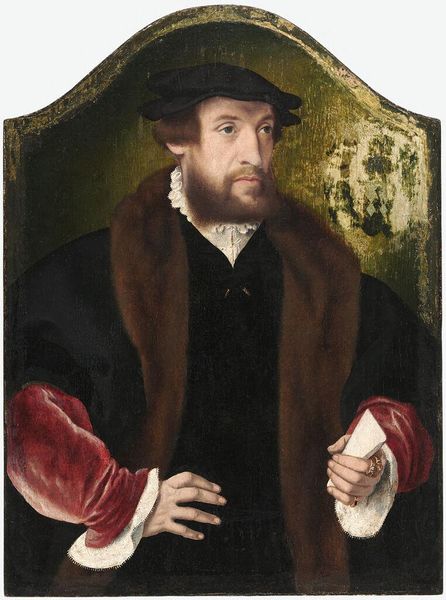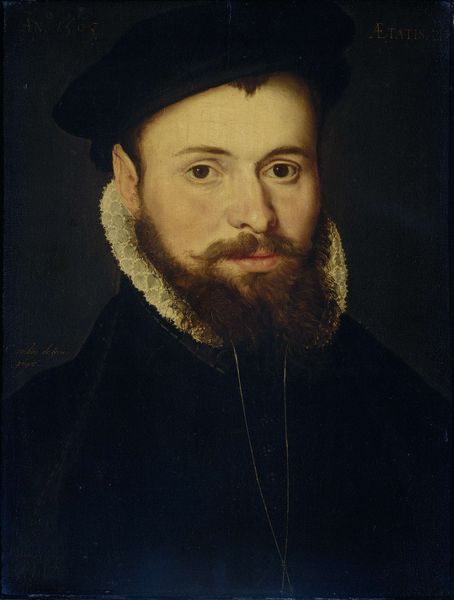
Dimensions: support: 470 x 410 mm frame: 750 x 628 x 100 mm
Copyright: CC-BY-NC-ND 4.0 DEED, Photo: Tate
Editor: Here we have "A Man in a Black Cap" by John Bettes, an oil painting from 1545. The detail in the fur collar is incredible, and the subject’s gaze is very direct. What strikes you most about its visual composition? Curator: Consider the interplay of textures: the dense fur against the smoother cap and the skin of the face. Bettes has articulated a hierarchy through varied surface treatments. Observe how light defines volume, particularly in the beard. What does this suggest to you about Bettes' artistic concerns? Editor: It emphasizes form, almost sculptural. So, the artist's skill in rendering textures isn't just decorative; it's fundamental to the overall structure. Curator: Precisely. The contrast enhances the painting’s architectural solidity. Bettes uses these elements to construct a powerful and lasting image. Editor: I see that now, a structured composition rather than just a portrait. Curator: Indeed, and that awareness allows us to engage with its form more fully.
Comments
tatebritain 6 months ago
⋮
http://www.tate.org.uk/art/artworks/bettes-a-man-in-a-black-cap-n01496
Join the conversation
Join millions of artists and users on Artera today and experience the ultimate creative platform.
tatebritain 6 months ago
⋮
This is the oldest picture in the Tate collection. The artist’s name is inscribed on the back. The writing on the front indicates that the work was painted ‘in the year of our Lord 1545’, and the sitter was aged 26. John Bettes is first recorded in 1531 as carrying out decorative work for Henry VIII’s court. He may have worked with Hans Holbein the Younger, the prestigious Tudor painter. Originally this portrait was larger and would have had a blue background. The pigment (smalt) has degraded and changed to brown. Gallery label, July 2024
